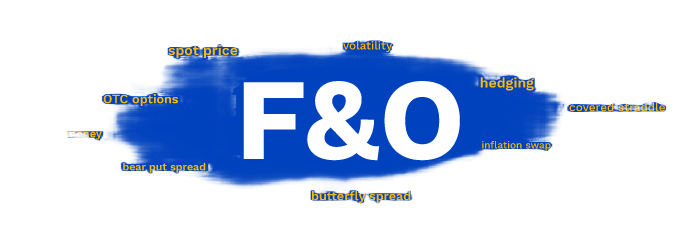Want to start trading? Know what futures and options or derivative products are & diff among them

Futures and options are ‘derivative’ products, which means they have no intrinsic value and derive it from the price movements (changing with market fluctuations) of the underlying assets or financial instruments.
These can range from financial assets such as indices, equities,and currencies to commodities such as oil, crops, petroleum, silver & gold, among others. Because the prices of all such assets fluctuate constantly, people who trade them on a wide scale in the markets risk suffering significant losses.
To protect oneself from adverse price movements and fluctuations, derivative goods are utilised as risk-reduction tools. These are also employed by speculators who seek to profit from price fluctuations.
In essence, both options and futures are financial agreements between buyers and sellers to exchange assets at a certain price on a specific day, known as the expiration date. As per recent NSE Announcement we can say that the last Thursday of the month is often the expiration date in India. But since both are leveraged products, both are quite dangerous. This implies that you can trade very large volumes for a relatively little upfront payment, known as the “premium” in options and the “margin” in futures. Retail investors should avoid this at all costs because it can lead to significant losses for both buyers and sellers.
What are futures in trading?
Futures is an agreement b/w a buyer and seller to exchange an asset at a fixed, predetermined price and on a certain date. Both the buyer and the seller must honour the contract when it expires. Futures are leveraged contracts, therefore the trader must pay the broker margin money, which is often a percentage of the contract value. Futures can be exchanged on the stock exchange and transacted in lots.
For example, if a farmer (kisaan) thinks the price of onions will drop in the future, he can contract with a buyer in Nov to sell 1,000 kg of onions (pyaz) on January 30 at Rs. 50 per kg (the going rate in Nov). This implies that he would have had to sell it for Rs. 40,000.0, a loss of Rs. 10,000, if the price had dropped to Rs. 40 per kg in Dec. However, kisaan is now able to sell it for Rs. 50,000, a profit of Rs. 10,000.0, thanks to this contract.

What are Options in Trading?
Options is likewise a contract between a buyer and a seller, but while the buyer has the option of executing it, the seller is required to honour it if the buyer chooses to.
Exchange charges fee: In exchange for granting/providing the choice, the seller charges the buyer a small fee which is known as a premium ammount or simply called as premium.
What is Call & Put?
Call & Put- It’s imp to know that Options are divided into two types: call and put. A call option is one that allows the trader the opportunity, but not consider it as the duty, to acquire an asset at a specific price and date.
What is the Strick Price & expiration date?
Strick Price & expiration date-This price is referred to as the strike price, & the date is known as the expiration date.
A put option, on the other hand, allows/enables the trader to sell an asset at a specific price and date.